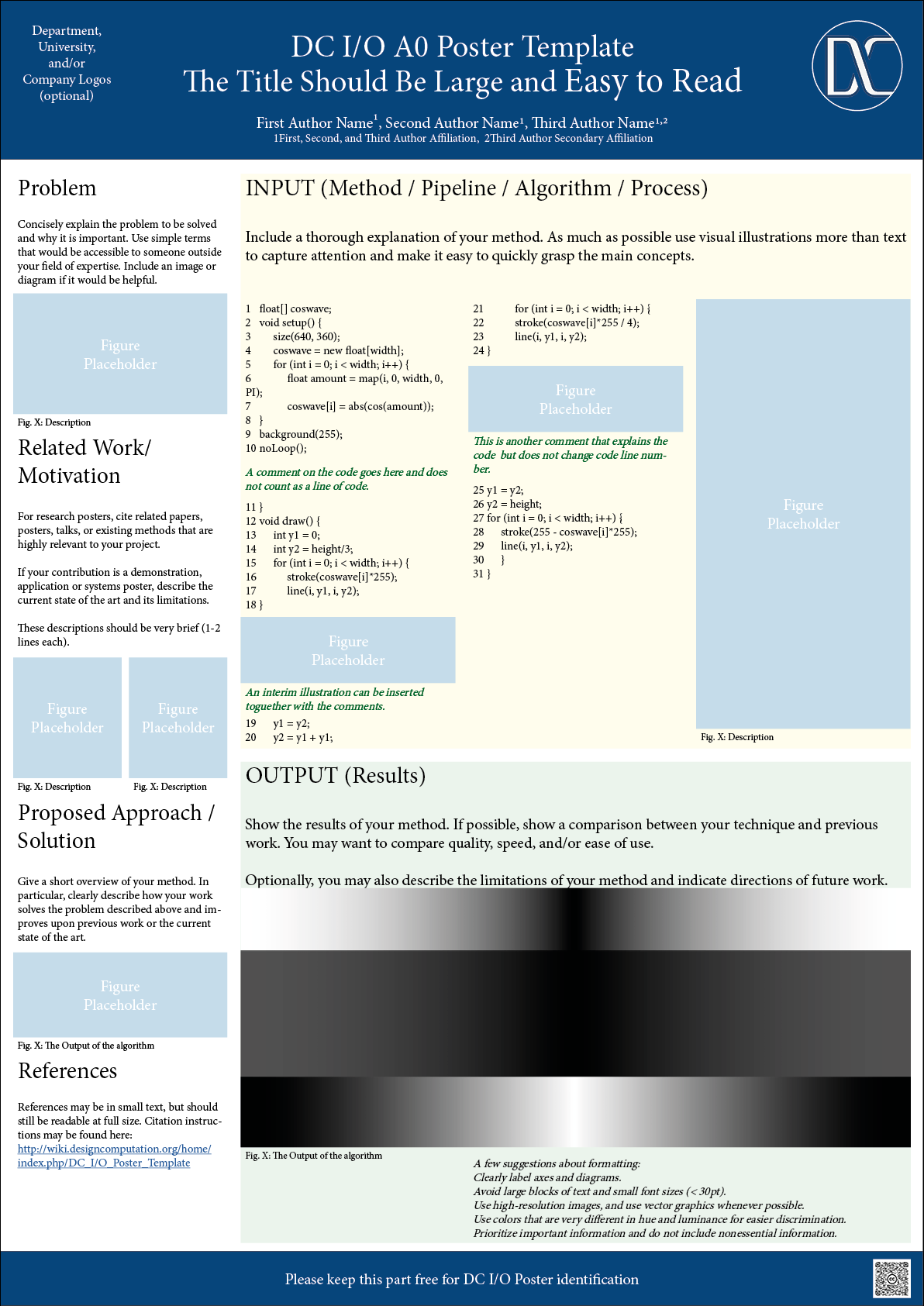Difference between revisions of "DC I/O Poster Template"
Abel Maciel (talk | contribs) (→Poster Format) |
Abel Maciel (talk | contribs) (→Title) |
||
| Line 17: | Line 17: | ||
==Title== | ==Title== | ||
| + | The Title Should Be Large and Easy to Read. | ||
| + | For autors, please use the same format as in the paper template: | ||
| + | *First Author Name1, Second Author Name1, Third Author Name1,2 | ||
| + | *1First, Second, and Third Author Affiliation, 2Third Author Secondary Affiliation | ||
| + | |||
==Problem Statement== | ==Problem Statement== | ||
Concisely explain the problem to be solved and why it is important. Use simple terms that would be accessible to someone outside your field of expertise. Include an image or diagram if it would be helpful. | Concisely explain the problem to be solved and why it is important. Use simple terms that would be accessible to someone outside your field of expertise. Include an image or diagram if it would be helpful. | ||
Revision as of 19:10, 4 October 2019
The DC I/O Posters Program seeks research projects from students, researchers, enthusiasts, artists and industry veterans. If your work is in progress, this is the place to share and get feedback.
Contents
Introduction
DC I/O Posters is a forum for ideas to be presented in a concise, visually appealing way. Do you have an idea for utilizing Design and technology in a novel way? How are you using computational design and interactive techniques to ignite collaboration and build communities; to assist people with disabilities and advance sustainable technology; or to educate through enhanced graphics and powerful storytelling? Anyone is welcome to submit to the Posters program: students, artists, researchers, and practitioners. The strongest posters focus on quantifiable methods, clear communication, and consideration of all audiences.
Poster Format
The DC I/O standard poster is a A0 size graphic presentation of the IMPLEMENTATION [I/O SECTION] of the conference paper. The use of the template is also very important to create conformity of style throughout conference proceedings. Margins, column widths, line spacing, and type styles are built-in; examples of the type styles are provided throughout this page and are identified in italic type, within parentheses, following the example.
Title
The Title Should Be Large and Easy to Read. For autors, please use the same format as in the paper template:
- First Author Name1, Second Author Name1, Third Author Name1,2
- 1First, Second, and Third Author Affiliation, 2Third Author Secondary Affiliation
Problem Statement
Concisely explain the problem to be solved and why it is important. Use simple terms that would be accessible to someone outside your field of expertise. Include an image or diagram if it would be helpful.
Related Work/ Motivation
For research posters, cite related papers, posters, talks, or existing methods that are highly relevant to your project. If your contribution is a demonstration, application or systems poster, describe the current state of the art and its limitations. These descriptions should be very brief (1-2 lines each).
Proposed Approach / Solution
Give a short overview of your method. In particular, clearly describe how your work solves the problem described above and improves upon previous work or the current state of the art.
References
References may be in small text (+- 25pt), but should still be readable at full size. Citation instructions are identical to the paper submission.
INPUT (Method / Pipeline / Algorithm / Process)
Include a thorough explanation of your method. As much as possible use visual illustrations more than text to capture attention and make it easy to quickly grasp the main concepts.
OUTPUT (Results)
Show the results of your method. If possible, show a comparison between your technique and previous work. You may want to compare quality, speed, and/or ease of use. Optionally, you may also describe the limitations of your method and indicate directions of future work.
DC I/O Poster identification
Please keep this clear as this will be used for QRC hyperlinks and other identifications.
